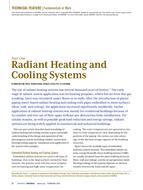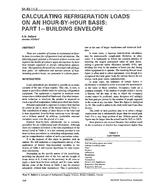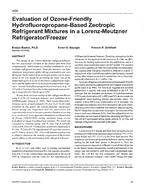An emissions test method using an electronic balance is introduced for measuring the TVOC emission rates of oil-based wood stains, with a detailed procedure for preparing test specimens. The emission characteristics of volatile organic compounds (VOC) from an artificial wood stain and an oil-based commercial wood stain were determined. Results showed that VOC emissions from both stains included a surface evaporation and an internal diffusion sub-process. With regard to time, the entire emission period could be divided into three periods: (1) an initial evaporation-controlled period that was characterized by a high and fast decaying emission rate, (2) a transition period (following the initial period) in which the emissions transited from an evaporation- controlled to an internal diffusion-controlled process, and (3) an internal diffusion-controlled period that was characterized by a low and slowly decaying emission rate. For the commercial wood stain tested, the length of the initial period was approximately three hours, and about 46% of the emittable VOC mass was emitted during this short period. The transition period was between 3 and 6.5 hours from the start of testing and only accounted for about 4% of VOC mass emitted. The rest (about 50%) of the VOC mass was emitted in the diffusion- controlled period over a long period of time. Comparison between the commercial wood stain and an artificial wood stain suggested that the pigments/solids in the wood stain had significant effect on the time scales and amount of mass emitted during each emission period. The presence of additional VOCs in the commercial wood stain might have also affected the emission profiles. These results are useful for developing better models for predicting the emission rates. The electronic balance method was also compared with those determined the two methods agreed well with each other, confirming the validity of the complete mixing assumption that is often used in environmental chamber testing. These results are useful for developing standard test protocols for testing “wet” building materials such as wood stains, varnishes, and paints.
Units: SI
Citation: ASHRAE Transactions, vol. 105, pt. 1
Product Details
- Published:
- 1999
- Number of Pages:
- 10
- File Size:
- 1 file , 280 KB
- Product Code(s):
- D-7542


